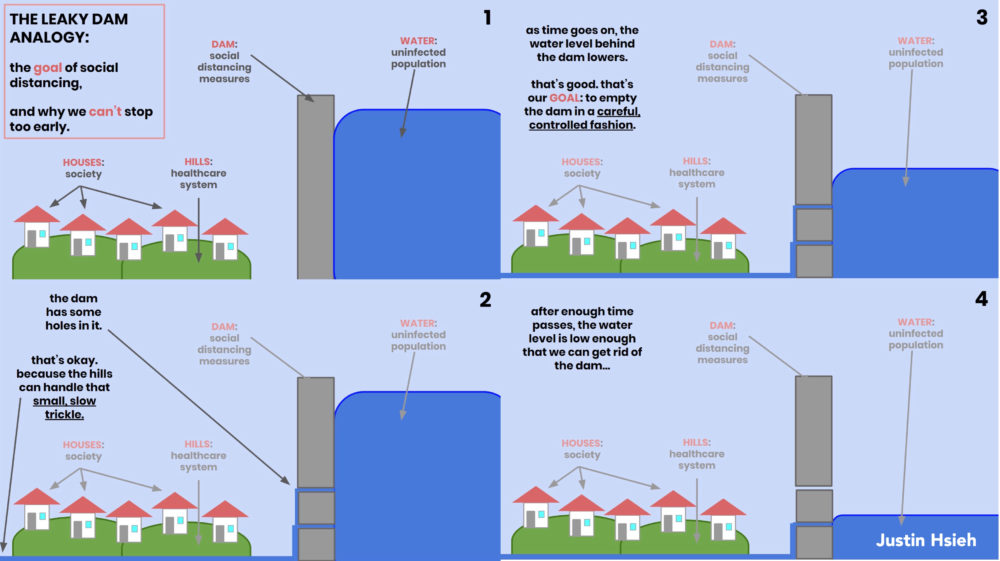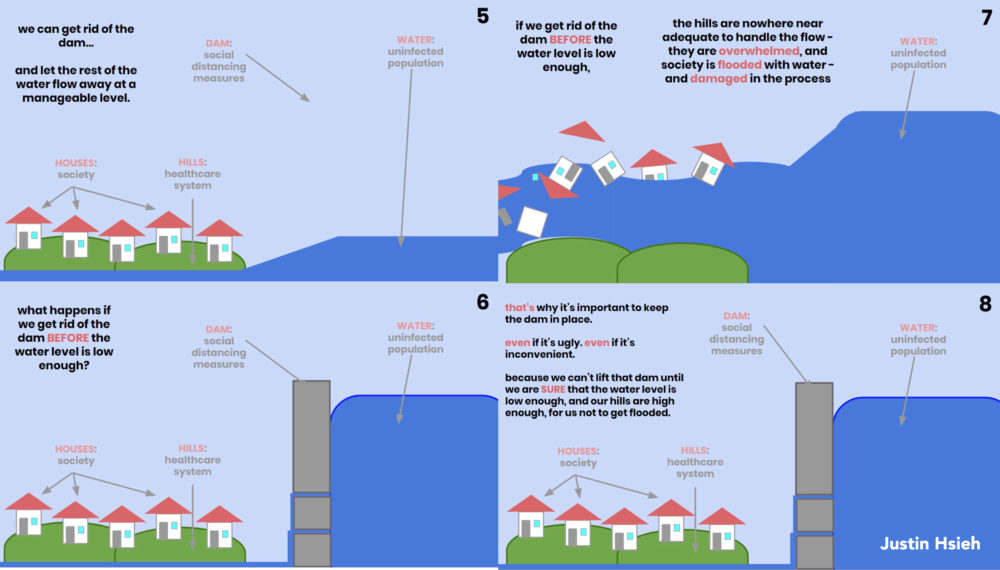
By Karen Phan
California Governor Gavin Newsom announced Thursday afternoon that all Orange County (OC) beaches must temporarily close. Given the photos of overcrowded OC beaches that made national headlines last Saturday, this order from Newsom is absolutely necessary.
California, the most populated state, has handled the COVID-19 pandemic well because of our quick response measures, including the stay-at-home order that became effective March 19. Various counties across the state, such as Los Angeles and those in the Bay Area, also implemented shelter-in-place protocols before or after Newsom’s state-wide mandate.
Staying at home and practicing social distancing make all the difference in slowing the transmission of COVID-19. Fewer people are out in public; most who go out wear masks, stay at least six feet apart and don’t linger for long. We’re not leading in COVID-19 cases and deaths, and our numbers are comparable to states with far smaller populations. California, the first in the nation to have a stay-at-home order, is “bending the curve,” Newsom said in early April.
This is exactly what we want to be doing. Flattening the curve keeps more people safe and helps the healthcare system tremendously because hospitals are not being overwhelmed with patients. That way, there are enough healthcare workers to take care of patients, and resources are not stretched as thin as they would be if healthcare facilities were flooded all at once.

Social distancing won’t make COVID-19 go away, but it is imperative to slowing transmission and protecting the vulnerable. Infographic by Justin Hsieh. 
Social distancing won’t make COVID-19 go away, but it’s imperative to slowing transmission and protecting the vulnerable. Infographic by Justin Hsieh.
California has kept the curve flat up to now, but our job isn’t done. Flattening the curve must be a sustained effort and if we lift our protective measures too soon, we could see a large spike in cases. We have to be especially careful since we saw a surge in cases state-wide and in OC last week.
While many Californians are diligently staying home and social distancing, some are not. Despite beach parking lots and numerous piers having been closed in March, last weekend throngs of people filled the shores of OC beaches without wearing masks or complying with social distancing guidelines.
Some point to photographs that show stretches of surf where beachgoers are responsibly distanced, or cite police reports saying ‘most’ or ‘a majority of’ families are practicing social distancing. While that is encouraging, what matters is the minority who aren’t practicing social distancing—because each and every one of those groups or individuals increases the risk of transmission.
Even if most beachgoers practice social distancing for most of their time at the beach, moving around outside in a public place in proximity to other people still increases the risk of transmission compared to staying home and making exceptions only for essential activities.
Our number one priority right now as a state should be to continue to flatten the curve, and that will only happen when we stay home and practice social distancing when in public. Keeping the beaches open for a potential repeat of what happened last weekend, even with police and health officials monitoring the masses, is counterproductive and threatens the curve.
There is a very real possibility that people who visited the beaches last weekend had COVID-19, were asymptomatic and unknowingly transmitted it or brought it back to their communities. We don’t know that for sure right now, but we should be able to tell if last weekend’s beach day caused a spike in cases these next five to ten days, Andrew Noymer, a public health professor at the University of California, Irvine, told the Guardian.
We might not see a surge in cases—hopefully, we don’t. Even if we don’t, and even though Huntington Beach Mayor Lyn Semeta says OC “has among the lowest per-capita COVID-19 death rates in California,” it might not stay that way when OC residents, and visitors from neighboring counties, flock the beaches with minimal protection and sanitation.
Huntington Beach, and possibly other coastal cities, are fighting Newsom and the state of California, claiming that the hard beach closures are punishment and abuse of power. OC Supervisor Michelle Steel argued that residents should be rewarded for respecting the stay-at-home order and social distancing, and OC Supervisor Don Wagner claimed OC’s curve is “trending down.”
But you don’t give rewards for unfinished work. As of the time of publication, OC reported 163 COVID-19 cases on May 1, the highest number of new cases in one day. OC reported 103 and 133 COVID-19 cases on April 29 and April 30, respectively, according to data from the OC Health Care Agency. Let’s hold onto that reward until we break our 100-cases-per-day streak and consistently see that we have fewer cases each day.
Prioritizing recreation and local authority at the expense of public health is dangerous and selfish. The irony is that the communities most passionate about lifting the stay-at-home order, including Orange County and Huntington Beach, are likely to force prolongations of the restrictions by flouting public health guidelines and ignoring experts’ advice.
The beach is not essential right now. You will not die if you don’t go to the beach. You can get your second chance at the beach—no one can get a second chance to live.
Justin Hsieh and Katy Nguyen contributed to this story.





